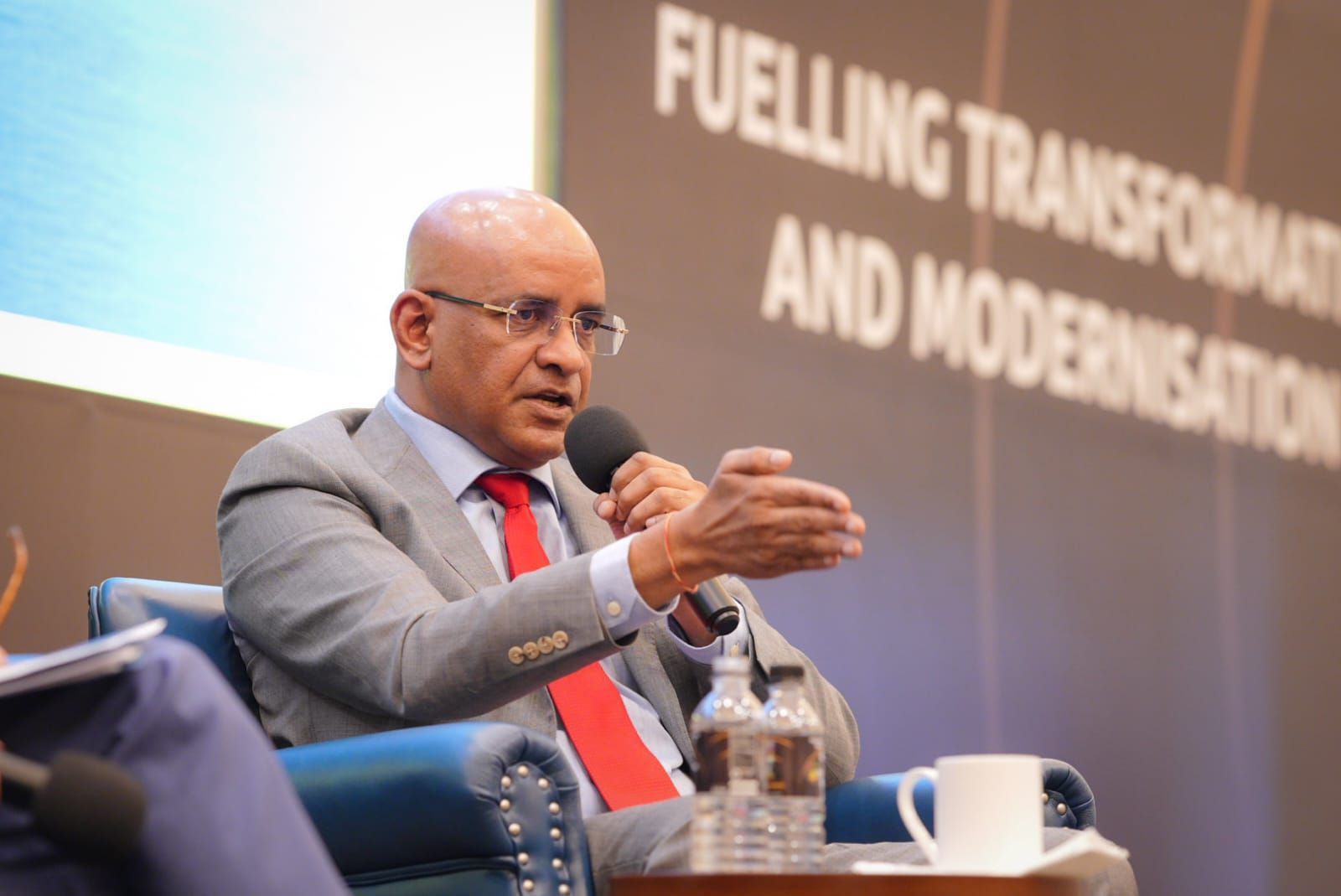Even with six floating production, storage and offloading (FPSOs) vessels operating at peak production, Guyana’s oil operations would only utilize 7% of the 150 million tonnes of emissions sequestered by its forests annually. So said Guyana’s Vice President, Bharrat Jagdeo, during a recent press conference.
The chief policymaker for the oil sector made this point on the heels of a heated interview that BBC journalist, Stephen Sackur, had with President Irfaan Ali. Sackur said many people believe that Guyana will move from being a carbon sink to a carbon bomb and that the development of its oil resources will emit over 2 billion tonnes of carbon. “That figure is absolutely wrong,” said the Vice President in strong objection.
“We did a quick calculation and if you look at the figure that was submitted in the Environmental Impact Assessments (EIA) for the licensing of the FPSOs, it was submitted that the maximum emission per FPSO would be 2 million tonnes of CO2 per annum,” he said.
Guyana will be carbon negative even when producing oil at 1.5 million b/d – Jagdeo | OilNOW
The Vice President was keen to note that while the foregoing figures are much lower at the moment, even in using those numbers, the use of the forests’ carbon sequestration budget is still significantly low.
“Even if we use those figures, 2 million tonnes per annum and we have 6 FPSOs which will give us between 1.2 to 1.5 million barrels of oil per day, that is 12 million tonnes of CO2 emissions per year,” said the official. Taking into account that Guyana’s forests sequester over 150 million tonnes of carbon from the atmosphere annually, Jagdeo said 12 million tonnes of CO2 from 6 FPSOs would only account for 7% of the carbon that the forests sequester.
Jagdeo also made the distinction that the 12 million tonnes of CO2 represent Scope 1 and 2 emissions. Should the impact of Scope 3 emissions be added, Jagdeo said the utilization of the carbon sequestration would still be low.
Guyana oil production could reach almost 1.5 million bpd by 2027 | OilNOW
“So, how do we calculate this? We looked at 1.5 million barrels per day from the 6 FPSOs over 365 days…and then multiplied that by the carbon content which is 40kg of CO2 equivalent per barrel, and that gives you about 24.7 million tonnes per year,” the Vice President explained.
He noted that under the United Nations’ accounting convention for emissions, Guyana does not have to consider Scope 3 emissions as these are not burnt onshore. But even if it were added, Jagdeo said Scope 1, 2 and 3 emissions would still account for 25% of the annual carbon sequestration by the forests. In the end, Jagdeo said Guyana will remain a carbon sink, even at peak production.



